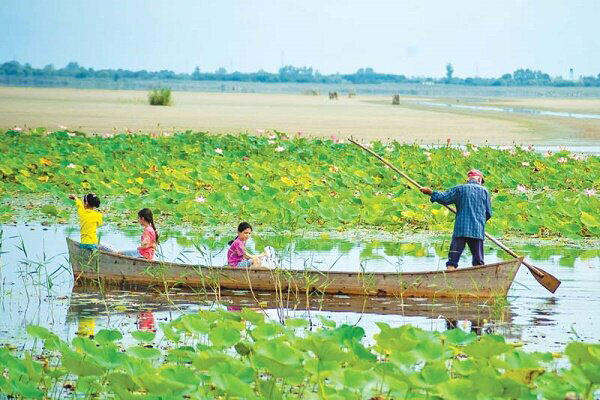Conservation plan underway for 18 wetlands nationwide

TEHRAN – A comprehensive management program is now being implemented for 18 wetlands of the country, Ali Arvahi, the director of the Conservation of Iranian Wetlands Project, said on Saturday.
The comprehensive program for the protection of Parishan, Shadegan, Urmia, Qara Gheshlagh, Qourigol, Miqan, Choghakhor, Zarivar, Hamoon, Bakhtegan, Alagol, Gavkhoni, Noruzlu, Soldoz, Kani Barazan, Haray Minab, Ne’or and Gandoman wetlands has been approved and is being implemented, he added, IRNA reported.
Two wetlands of Goater and Hilleh are awaiting approval and a plan is being prepared for 12 others, he noted.
During the last few years, the importance of wetlands and their protection came into consideration, and over time, the law on protection, rehabilitation, and management of wetlands was approved in the Iranian calendar year 1394 (March 2015-March 2016).
According to Article 5 of the law, the Department of Environment (DOE) is obliged to plan the ecosystem management of wetlands with the priority of critical and damaged ones with the participation of the ministries of energy, agriculture, and related bodies within two years, he explained.
In Iran, 141 wetlands with ecological value with an area of over 3 million hectares have been identified, of which 25 wetlands are designated as wetlands of international importance (registered in the Ramsar Convention) covering more than 1.4 million hectares and four sites are biosphere reserves. Based on the law, a comprehensive management plan was developed and will be implemented for 34 wetlands of the country, along with the activation of a cross-sectoral management system.
The project aims to focus on better management of wetlands in accordance with climate change, improving the management of natural resources, and emphasizing the role of public participation and raising awareness, Arvahi stated.
In Iran, 141 wetlands with ecological value with an area of over 3 million hectares have been identified, of which 25 wetlands are designated as wetlands of international importance (registered in the Ramsar Convention) covering more than 1.4 million hectares and four sites are biosphere reserves.
Of Iran’s 25 Ramsar sites about one-third are under pressure or in a critical condition.
Chief of the Department of Environment (DOE) Issa Kalantari has said in order to restore wetlands in the country a budget of 600 trillion rials (nearly $14 billion) is required.
Important role of wetlands in ecosystem
Wetlands are ecosystems saturated with water, either seasonally or permanently. They store water and ensure its quality, providing resilience against drought. They play a central role in sustainable development by supplying all our freshwater.
Natural wetlands are a variety of habitats such as rivers, lakes, coastlines, mangrove forests, and even coral reefs. An immense variety of species of microbes, plants, insects, amphibians, reptiles, birds, fish, and mammals can be part of a wetland ecosystem.
They are among the most productive ecosystems in the world, comparable to rain forests and coral reefs.
The functions of a wetland and the values of these functions to humans depend on a complex set of relationships between the wetland and the other ecosystems in the watershed. A watershed is a geographic area in which water, sediments, and dissolved materials drain from higher elevations to a common low-lying outlet or basin a point on a larger stream, lake, underlying aquifer, or estuary.
Wetlands play an integral role in the ecology of the watershed. The combination of shallow water, high levels of nutrients and primary productivity is ideal for the development of organisms that form the base of the food web and feed many species of fish, amphibians, shellfish, and insects. Many species of birds and mammals rely on wetlands for food, water, and shelter, especially during migration and breeding.
FB/MG
Leave a Comment